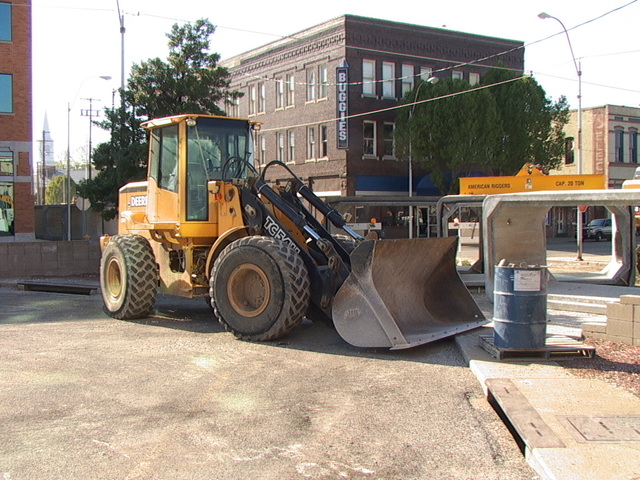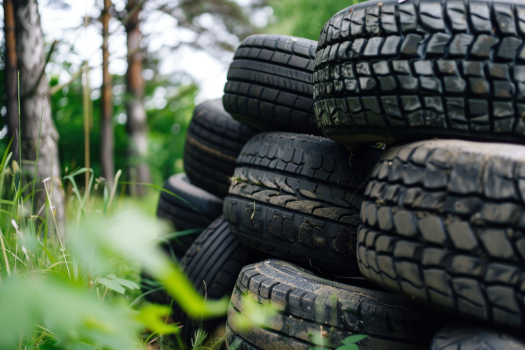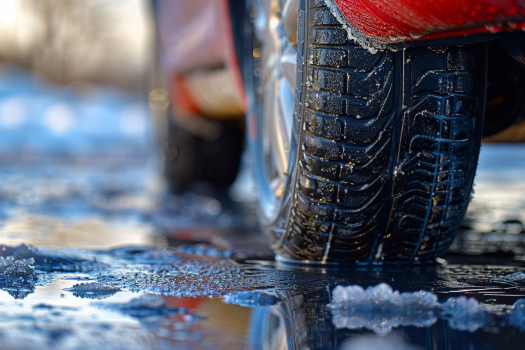Last Updated on April 21, 2024
Discover the Best Construction Tires Options for Your Needs
You’ve got the job contract and the crew; now, you need the right tools and equipment to take on the job. If the work requires heavy equipment, a quick check to ensure your construction tires are in good operating condition and suitable for the job can avoid costly delays out on the job site.
Selecting the right construction tires when equipping your work vehicles for the most demanding challenges on construction sites is paramount. These specialized tires are designed to endure the rugged demands of heavy-duty environments, providing the durability and performance needed to do the job efficiently and safely.
In this guide, we’ll delve into the world of construction tires, exploring different tire construction types, offering valuable tips, and helping you make informed decisions to ensure your worksite vehicles are equipped with the best.
Construction Tire Classifications
Off-road tires for Heavy Equipment come in a few different types. The type of tire you need will depend on what kind of equipment you are using and the application. The tires are rated as E, L, or G. “E” is for Earthmover equipment such as scrapers, articulated dumps, or rigid dump trucks. “L” is for Loaders and Dozers, and “G” is for Graders.
Loader tires or “L” tires will generally have more sidewall protection due to the typical terrain they work in. In contrast, a transport tire on an earthmover will not have the same level of sidewall protection but can handle the stresses of carrying loads at higher speeds.
Tread Types
After determining which tire type you need to purchase, it’s time to decide which tread pattern to go with. The most significant factor when determining the tread type to use is the job site or the typical terrain in which your equipment operates. For common Loader applications, an L2 or L3 is recommended. An L2 tire will give you maximum traction and cleaning ability in sand and soft conditions.
An L3 tire is used in general loading applications that require more resistance to scrapes and impacts, for example, in rocky lots. For example, the L3 tires had more durable rubber than the L2. L5 construction tires are the toughest. They offer deep tread, longer tread life, and highly durable, chip-resistant rubber for quarries. The added protection comes at a higher price because there is typically much more material used in an L5 tire than an L4 or L3 tire.

Frequency and Length of Service
Another consideration is how often you use the equipment and the scope of the work performed. If you use the equipment infrequently for a short time, you may want to consider the up-front cost of the replacement tires. If the tires are used infrequently for short periods, the tires will likely not heat up enough to cause performance issues. However, if you are a commercial operator who uses the equipment for an extended amount of time each day, you’ll want to consider which tires will be better for the long haul.
Some manufacturers have construction tires that are dual-marked. These dual-marked tires are suitable for transport or loader applications. For example, these construction tires would be marked “E3/L3” and can be used on a transport or loader vehicle. Do not use tires for different applications unless it is a dual-marked tire, and never mix and match your construction tires.
Severity of Job Site and Additional Restrictions
Finally, it’s essential to take into the TMPH rating. An OTR tire manufacturer can perform an on-site TMPH study. A construction tire’s TMPH rating is the working capacity of the tire as well as the heat index. The tire must have a TMPH equal to or greater than the service or job classification.
In addition to the TMPH rating, one has to consider the limitations and restrictions of these tires to ensure that they are appropriately utilized and safely. An “E” tire can travel 2.5 miles one way at a maximum speed of 30 mph. An “L” tire is designed for 250 feet at five mph, and a “G” tire can travel unlimited working distances at 25 mph.

Construction Tires can be a significant investment for any commercial operator—the larger the equipment, the higher the tire cost. You want to carefully consider the application before deciding on the type of tire. Your experience with and the condition of the tires you are replacing is the best indication of what you need to buy. If the tires you return wear out evenly and last long, you should consider a direct replacement.
Consider a similar tread pattern and price point model if the tires are no longer available. If the tires were removed from the equipment for some reason other than tread wear, consider considering this. Perhaps a heavier Load Rating, higher classification, or different tread pattern is in order.
Types Of Tire Construction
When it comes to tires, understanding their construction types is like peering under your vehicle’s hood. It’s where the magic happens, where design meets the road. There are two main ways tires are built, each with unique characteristics.
Look at these tire construction types and discover what sets them apart.
Bias Ply Construction
- In bias ply tires, the internal structure consists of multiple layers of fabric cords.
- These fabric cords run diagonally across the tire, creating a crisscross pattern.
- The overlapping layers of fabric cords give bias ply tires a stiff sidewall, which is beneficial for heavy loads.
- Bias ply tires are known for their durability and resistance to punctures, making them suitable for rugged applications.
Radial Ply Construction
- Radial ply tires have a different internal structure compared to bias ply tires.
- The fabric cords in radial tires run perpendicular (at 90-degree angles) to the tire’s centerline.
- This construction creates a more flexible sidewall, allowing the tire to absorb shock better and providing a smoother ride.
- Radial tires are also known for fuel efficiency, improved traction, and overall ride comfort.
The choice between bias ply and radial ply tires depends on various factors, including the intended use of the tires, the type of vehicle they will be fitted on, and personal preferences. Each construction type has its advantages and is suited for specific applications.
Where to Buy Construction Tires
To get the most out of your equipment and the lowest cost per hour, consider using online research tools like what is available at Tires-easy. The information on the website, the wide range of heavy equipment tires available for purchase, and easy shipping make finding a construction best suited to your work easy.
Conclusion
In the demanding construction world, having the right equipment is essential. This includes ensuring your work vehicles have the most suitable construction tires. Whether you opt for Bias Ply’s sturdiness or Radial Ply’s versatility, Tire Easy is your go-to source for quality and durability. Explore our extensive selection of construction tires, and equip your vehicles for the challenges that await on construction sites.
Ready to enhance your worksite’s efficiency and safety with top-notch construction tires?
Visit Tire Easy today to explore our range of options. Drive confidently on rugged terrains, knowing you have the right tires supporting your work. Elevate your construction experience with Tire Easy – your trusted tire partner.
FAQs
What does construction mean on tires?
Construction, in the context of tires, refers to a tire’s specific design and build tailored to withstand the rigors of construction sites. These construction tires are engineered with features like reinforced sidewalls and increased load-carrying capacity to excel in off-road conditions, providing traction and stability on uneven terrain.
What are tire construction types?
Tire construction types encompass how tires are built and designed. The two primary categories are Bias Ply and Radial Ply. Bias Ply tires employ multiple layers of fabric cords overlapping at various angles, offering a stiffer sidewall ideal for heavy loads. Radial Ply tires, on the other hand, feature fabric cords running perpendicular to the tire’s centerline, providing a more flexible sidewall, better fuel efficiency, improved traction, and a smoother ride.
What is the best construction tire type?
The ideal construction tire type depends on your requirements and the vehicles they will equip. Radial Ply tires are often preferred for their versatility, durability, ride comfort, and fuel efficiency. However, the best tire type for your needs may vary based on load capacity, terrain, and vehicle type.
What are the two types of tire construction?
The two primary tire construction types are Bias Ply and Radial Ply. Bias Ply tires utilize fabric cords overlapping at various angles, creating a stiffer sidewall. Radial Ply tires feature fabric cords running perpendicular to the tire’s centerline, resulting in a more flexible sidewall. Each construction type offers unique advantages, catering to different applications and preferences in construction tires.









